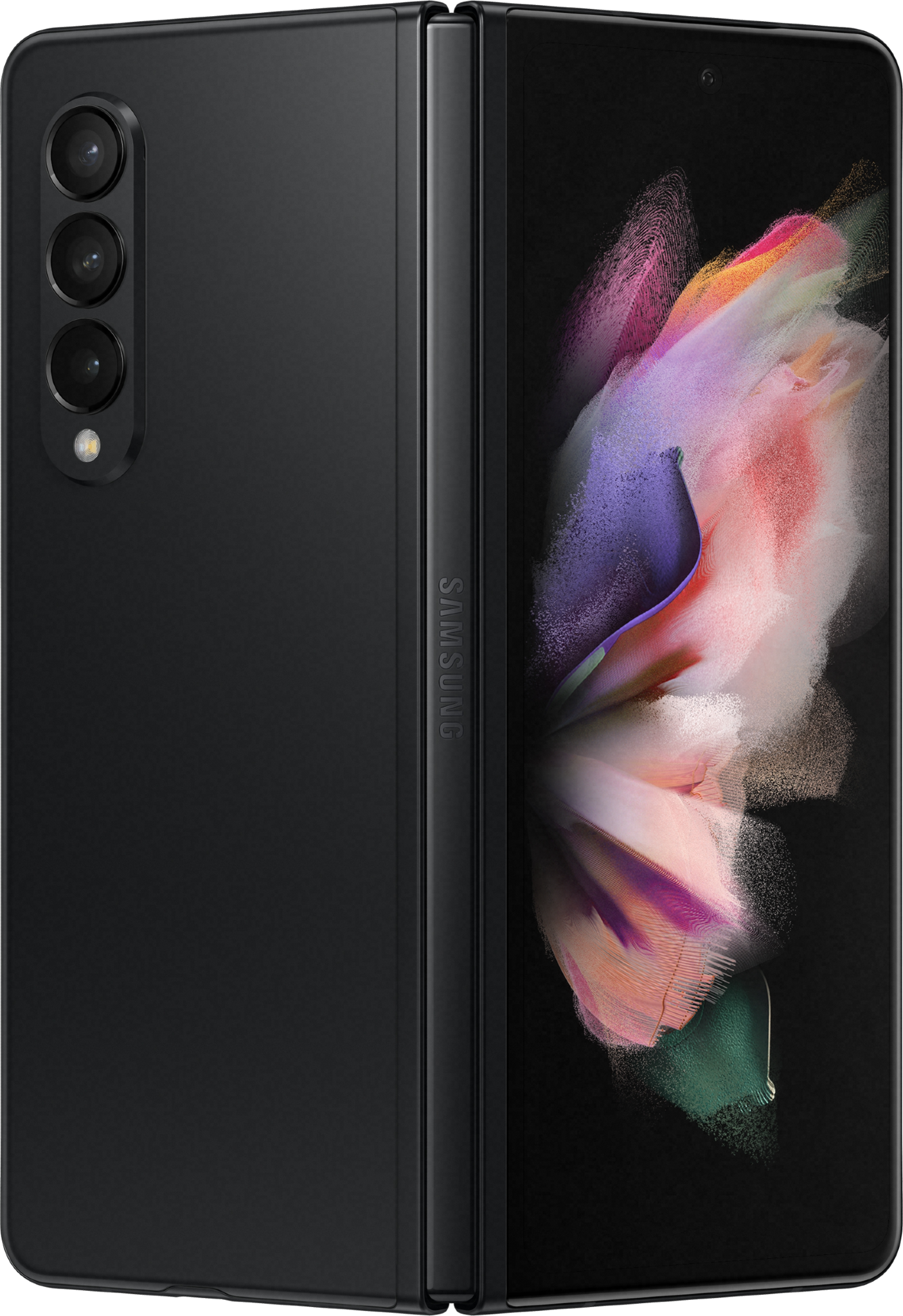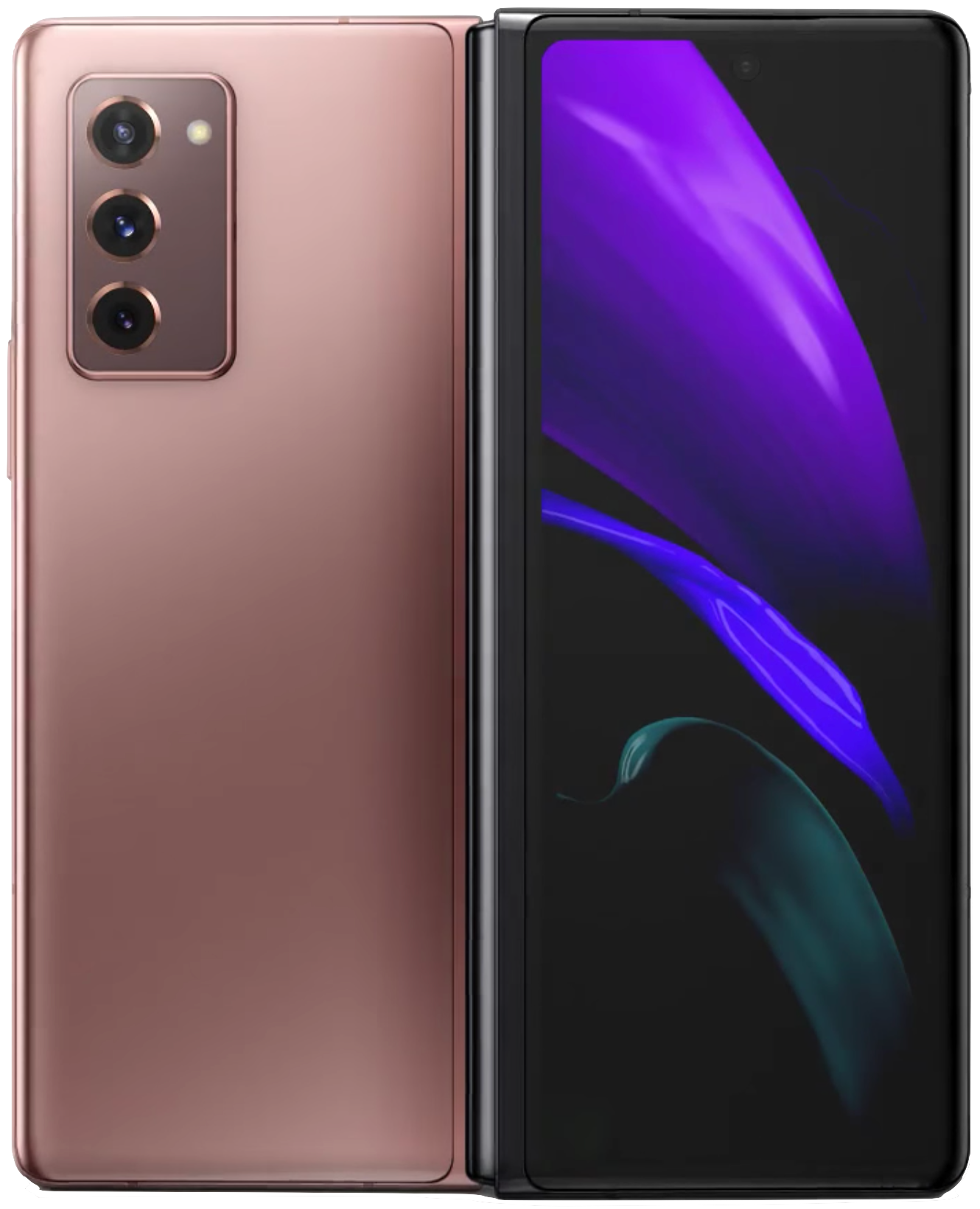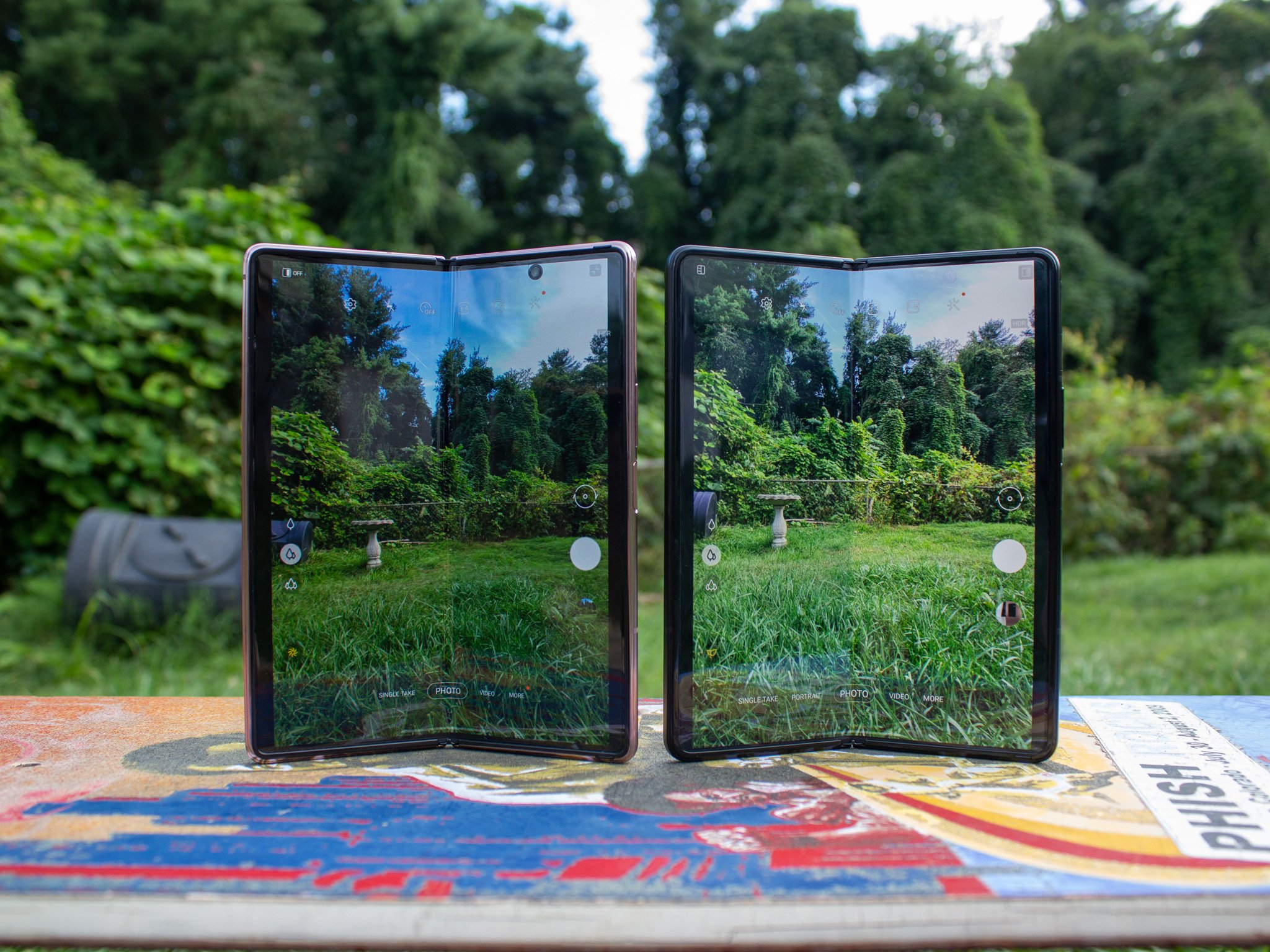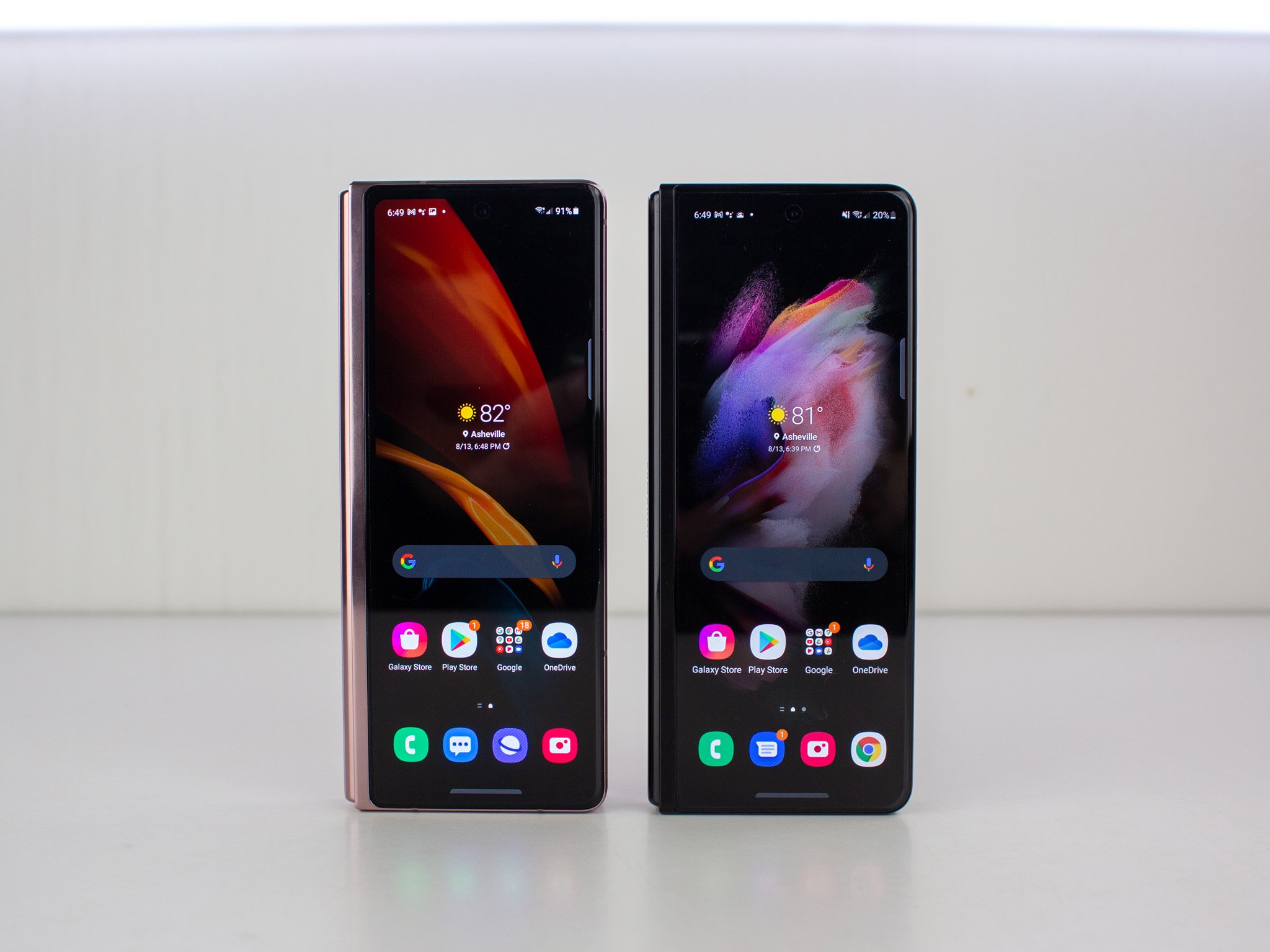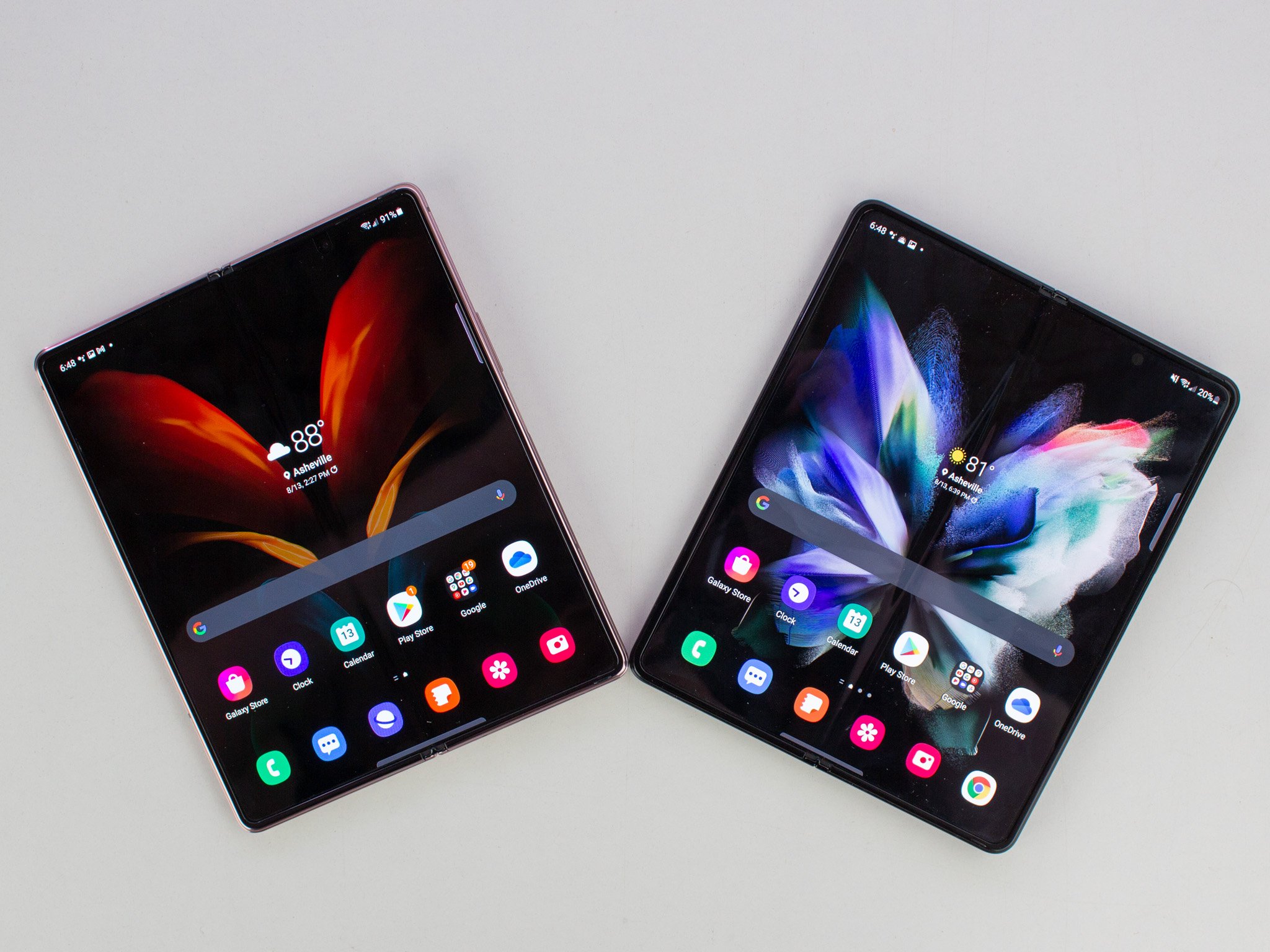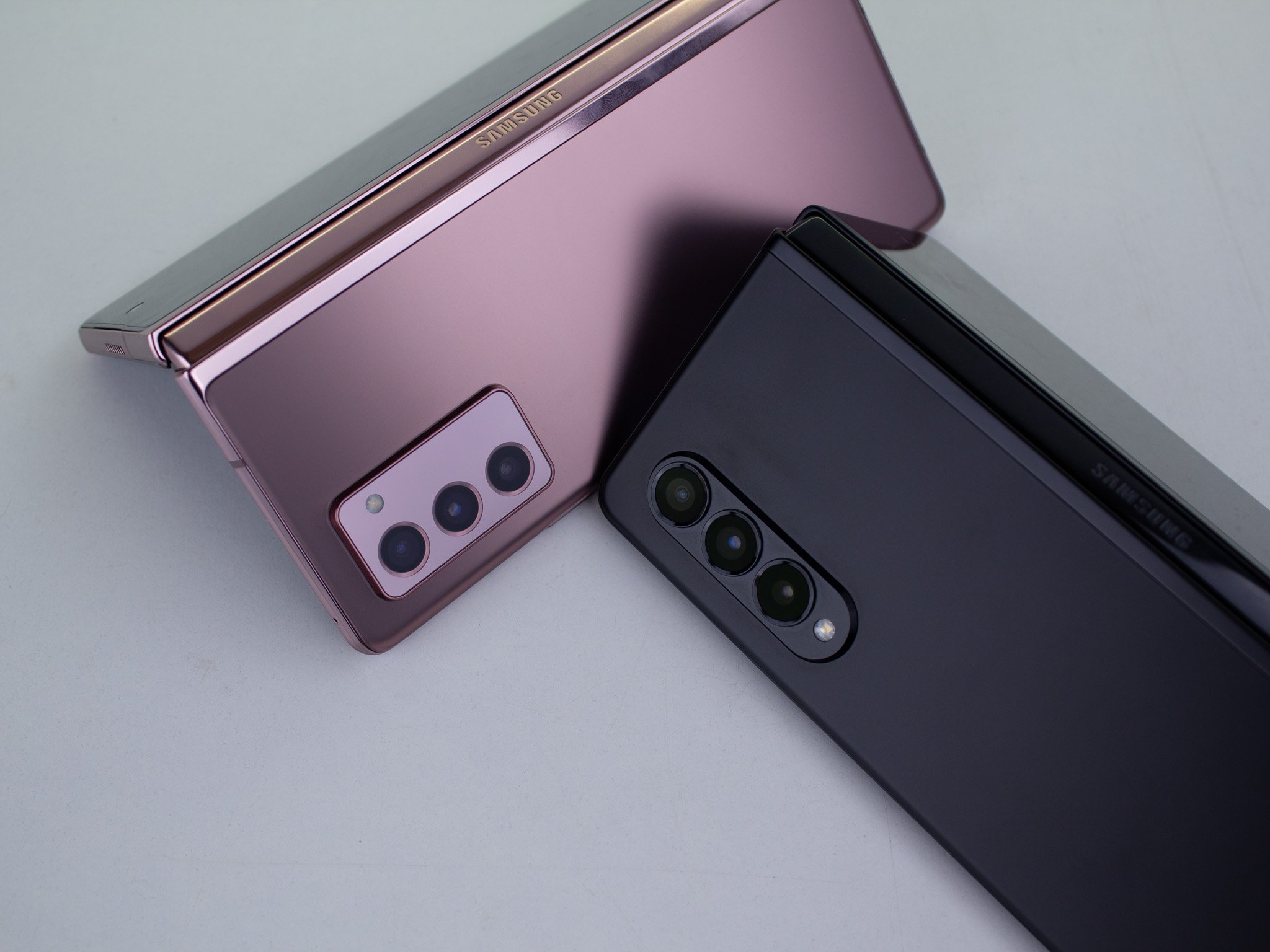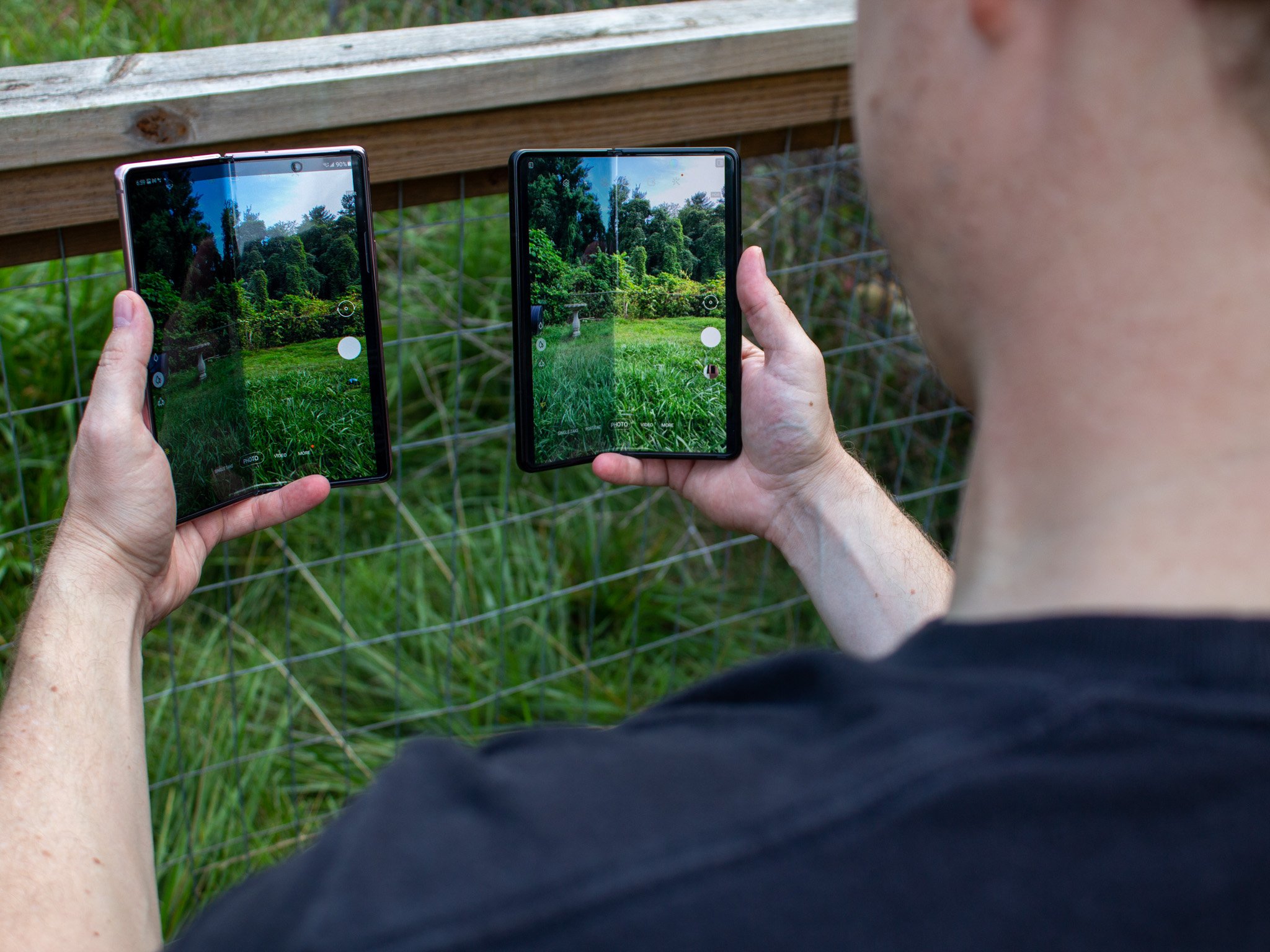Samsung Galaxy Z Fold 3 vs. Galaxy Z Fold 2: Should you upgrade?
Better in every way
Pros- More durable design
- 120Hz panels both inside and out
- Works with S Pen
- High-end internal hardware
- IPX8 water resistance
- Hole punch camera is covered by a grid of pixels
- Prohibitively costly
- Same rear cameras as Z Fold 2
- Under-display camera is questionable quality
The Galaxy Z Fold 3 features a range of refinements that make it a desirable upgrade. Samsung is using a new plastic layer for the screen that feels like glass, the phone has IPX8 water resistance, and both the inner and outer screens now go up to 120Hz. And best of all, you can use the S Pen with the Z Fold 3, making it that much more useful as a productivity device.
Samsung Galaxy Z Fold 2Outmatched
Pros- Similar design as Z Fold 3
- High-end internals
- Durable hinge
- Decent cameras
- No water resistance
- Plastic screen coating gets scratched
- Outer screen is 60Hz
- Costlier than Z Fold 3
The Galaxy Z Fold 2 still has a lot to offer, but when seen against the Z Fold 3, it doesn't quite measure up. There's no water resistance, the plastic coating covering the screen doesn't feel great in daily use and is prone to scratches, and the outer screen is limited to 60Hz. If you're frustrated by these shortcomings, you'll want to switch to the Z Fold 3.
Samsung is ready for foldables to go mainstream, and that's evident once you look at the changes introduced with its latest launch. The South Korean brand is now positioning foldables as its second flagship series in lieu of the Galaxy Note series, and that gives us a good indication as to where Samsung's priorities lie in this area. So if you're already using the Z Fold 2 or any other foldable and are interested in seeing what's new with the Z Fold 3, here's what you need to know.
Samsung Galaxy Z Fold 3 vs. Z Fold 2 Design and displayThe Galaxy Z Fold 3 ushers a new era of foldables, with Samsung confident enough in the durability of the device to position it as a viable alternative to the Galaxy Note series. While the Z Fold 3 looks largely identical to its predecessor, it is packed with new features that give it a distinct edge.
The Galaxy Z Fold 3 has a more durable design - and it even gets IPX8 water resistance.
Sure, the Galaxy Z Fold 2 wasn't a bad device by any measure, but Samsung introduced a lot of clever tweaks to the Z Fold 3 that make it a much more enticing option. First among them is the chassis itself; the Z Fold 3 uses a new Armor Aluminum alloy that makes it incredibly durable and resistant to any flexes.
Samsung also beefed up the hinge and made it smoother to use, a key consideration for a device that you'll unfold several times a day. But the biggest change has to do with the screen: Samsung is using a new PET screen cover that makes mimics the feel of glass. The Z Fold 2 has a plastic screen protector that feels flimsy and is prone to scratches, but that is not the case with the Z Fold 3; the new cover means interacting with the phone is as seamless as any of the best Android phones.
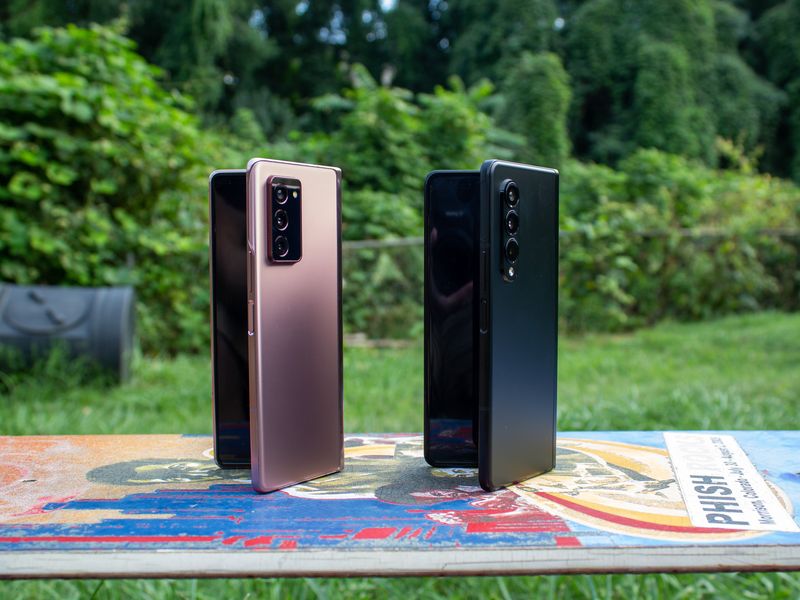
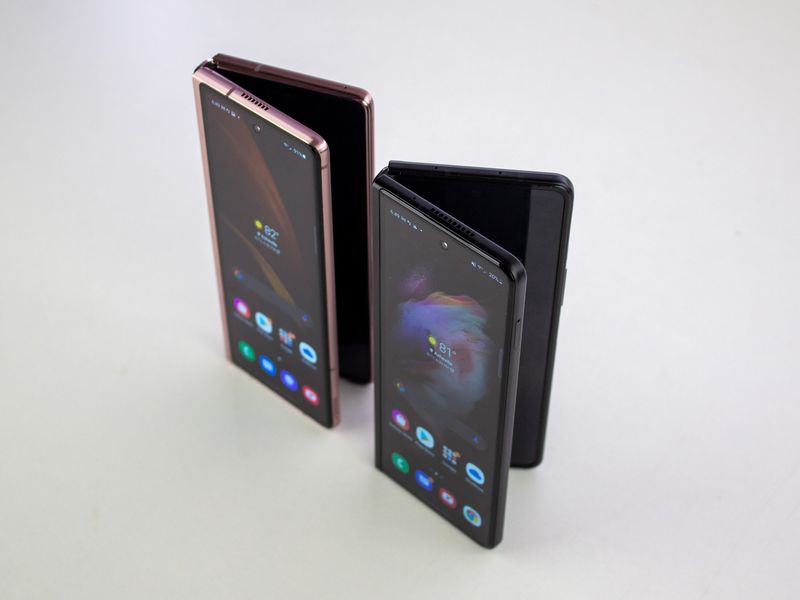
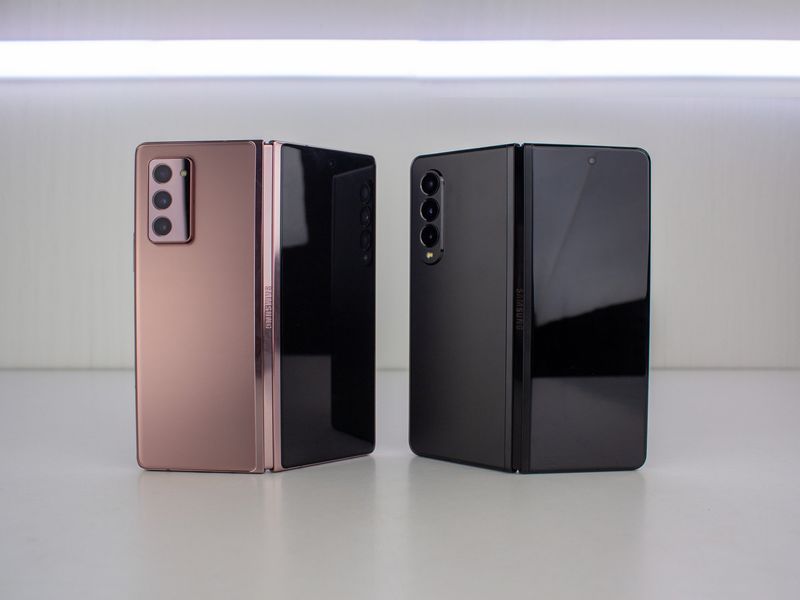
Another differentiator with the Z Fold 3 is IPX8 water resistance. Samsung added seals around the SIM card tray and adhesive around the hinge to prevent water ingress, and the result is the first foldable that works even after it has been submerged in water. There's no protection against dust ingress here, but the Z Fold 3 has a new nylon dust protector inside the hinge that Samsung says is more than adequate to the task.
The inclusion of S Pen makes the Z Fold 3 a productivity powerhouse.
The Z Fold 3 is also marginally thinner and 11g lighter than its predecessor; it still comes in at 272g, but the slimmer profile should make it just a tad easier to manage.
Switching over to the screen, the Z Fold 3 has the same 6.2-inch 25:9 screen size for the outer panel and 7.6 inches for the inner foldout portion. Both screens feature AMOLED panels, and a big change this year is that the outer and inner screens now go up to 120Hz - with the Z Fold 2, this was only possible on the inner screen. The outer screen is protected by a layer of Gorilla Glass Victus as well, just like last year.
And one key difference is that the screen on the Z Fold 3 is finally polarized, so you can use the phone while wearing sunglasses. Of course, the upgrades don't end there. Because Samsung is slotting in the Z Fold 3 in the place of the Galaxy Note series, it is adding S Pen integration to the device. That's a big deal particularly considering the foldout screen, making the Z Fold 3 the ultimate productivity device.
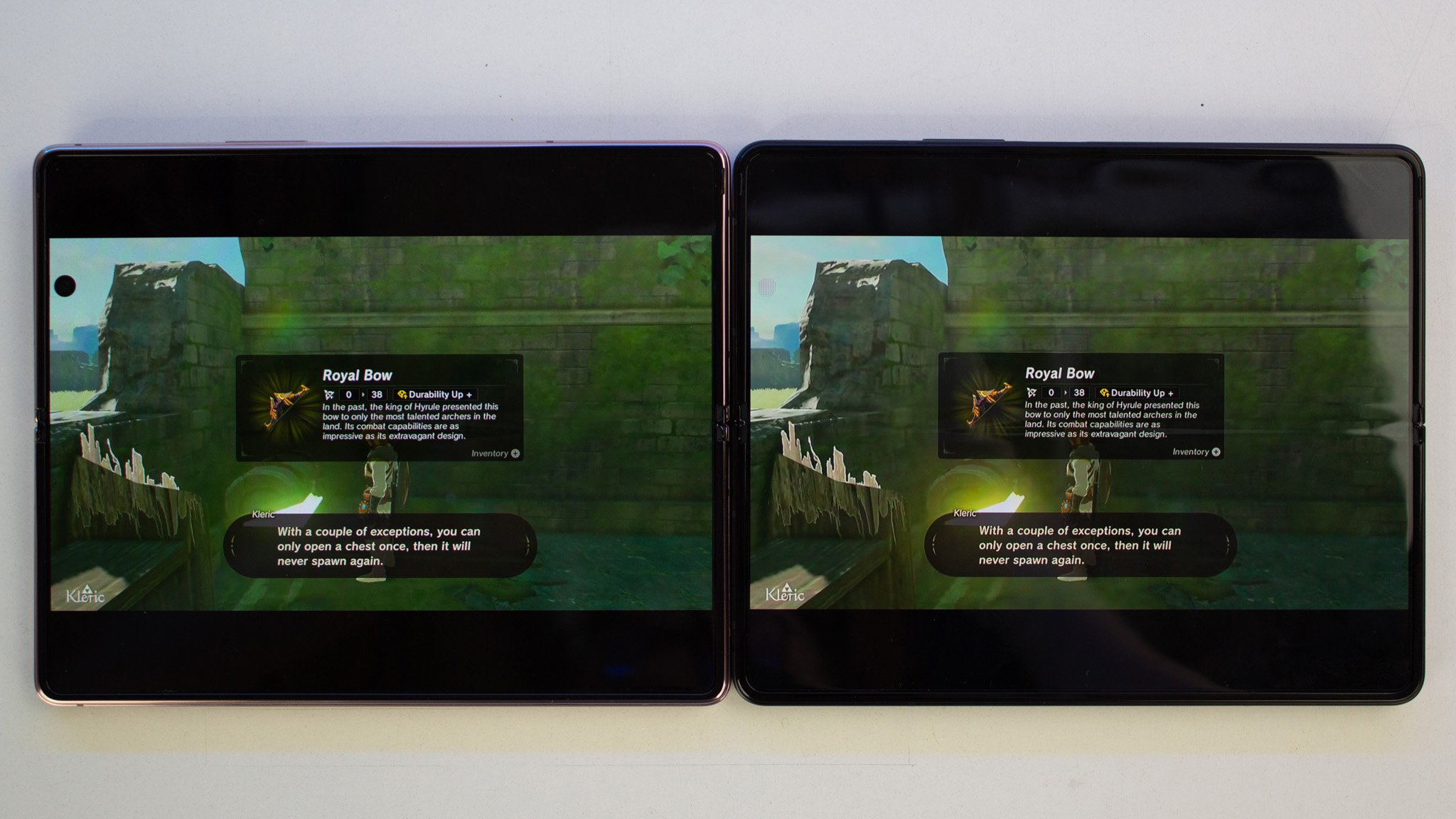 Galaxy Z Fold 3 on the right with new under-display camera.
Galaxy Z Fold 3 on the right with new under-display camera.
Lastly, we can't forget to discuss that new under-display camera, found on the large inside display. The Galaxy Z Fold 2 sports a hole-punch camera right in the middle of the right-half of the large screen, while the Galaxy Z Fold 3 attempts to hide this by covering it with a grid of pixels. While it's not as pixel-dense as under-display cameras from Vivo, the new method does a great job of hiding the camera in many circumstances, giving you more of that big, beautiful display to gawk at.
Samsung Galaxy Z Fold 3 vs. Z Fold 2 Hardware and softwareThe Galaxy Z Fold 3 is the costliest phone in Samsung's portfolio, and the hardware reflects the same. The phone is powered by the 5nm Snapdragon 888 and features 12GB of RAM and 256GB of storage as default, and there's also a 512GB variant if you need more storage.
The Z Fold 3 is as feature-packed as the Galaxy S21 Ultra - and yes, there's no MicroSD slot here either.
There's no 3.5mm jack or a MicroSD card slot here, but the Z Fold 3 has stereo sound, AptX HD audio codec, Bluetooth 5.2, Wi-Fi 6e, and global 5G connectivity - with mmWave bands included by default. You'll also find UWB, NFC, Samsung Pay, and a side-mounted fingerprint sensor that is fast to unlock the phone.
Not too much has changed on the hardware side of things from last year, with the Z Fold 2 offering most of these features. Samsung reduced the battery marginally this year, with the Z Fold 3 featuring a 4400mAh unit (versus 4500mAh last year), and it uses the same 25W fast charging standard. As always, there's 11W Qi wireless charging, and you can charge other accessories wirelessly thanks to reverse wireless charging.
In what will be a letdown for potential owners, the Z Fold 3 retains the same camera array as last year, offering three 12MP modules. There's an f/1.8 primary lens joined by a zoom module with OIS that goes up to 2x optical zoom, and a wide-angle lens with a 123-degree field of view. Samsung really should have added the incredible cameras from the Galaxy S21 Ultra here, because in all other areas the Z Fold 3 is a considerable upgrade over its predecessor.
Samsung now offers three Android version updates and four years of security patches, and that ensures both the Z Fold 3 and Fold 2 will get updates for a long time. Samsung is currently the brand to beat when it comes to software update longevity, so there is absolutely no reason to be worried if you're interested in buying the Z Fold 3. The device runs One UI 3.5 based on Android 11 out of the box, and there aren't many changes from One UI 3.1 on the Z Fold 2.
Samsung Galaxy Z Fold 3 vs. Z Fold 2 Is it time to upgrade?The Galaxy Z Fold 2 launched just a year ago, and it is still going strong - particularly in terms of the hardware - so if you're using the foldable phone, there isn't a need to upgrade to the Z Fold 3. That said, all the new changes that Samsung introduced this year make the Z Fold 3 that much more exciting.
If you value the S Pen integration or water resistance, you should get the Z Fold 3.
Ultimately, it comes down to whether you value the additions. If you need the ability to use the S Pen or require water resistance, the Z Fold 3 is the obvious upgrade. There's also the fact that the phone has a more durable chassis, and the new plastic cover makes using the foldout screen much more enjoyable.
Samsung has an enticing trade-in deal where you'll get $900 for the Z Fold 2 if you're interested in switching to the latest flagship. And there's the fact that at $1,800, the Z Fold 3 is launching for $200 less than its predecessor. If you're interested in making the switch, you'll get a further $200 credit toward Samsung's latest accessories, like the exciting Galaxy Watch 4 or the Galaxy Buds 2.
Samsung clearly knows how to incentivize its latest products, and if you feel the need to upgrade from the Z Fold 2, now is the best time to move to the Galaxy Z Fold 3.
Samsung Galaxy Z Fold 3Better in every way
From $1,800 at SamsungFrom $1,800 at Amazon
The obvious foldable upgrade in 2021
The Galaxy Z Fold 3 delivers exciting upgrades in most key areas. The new plastic cover for the foldout screen is nearly indistinguishable to glass, both the inner and outer screens now go up to 120Hz, the phone comes with the latest internal hardware with 5G and takes great photos in any scenario, and there's even the ability to use the S Pen with the Z Fold 3. Add in IPX8 water resistance and you have a device that is just as versatile as regular flagships.
Samsung Galaxy Z Fold 2Outmatched
$1,800 at Samsung$1,800 at Amazon$1,800 at Best Buy
Not quite up to the mark
The Galaxy Z Fold 2 is a great phone in its own right, but it doesn't measure up to the Z Fold 3. The plastic screen protector scratches easily and doesn't convey the feeling of using a premium phone, there's no water resistance, and you miss out on S Pen integration as well. That said, the hardware itself is still relevant, the hinge is still reliable in daily use, and the phone takes great photos. But if you're eyeing the new additions on the Z Fold 3, it's time to make the switch.
